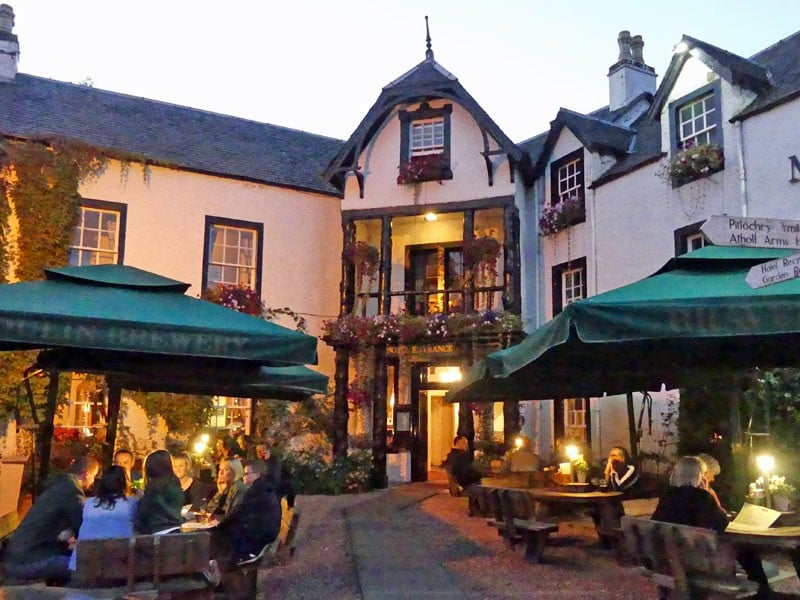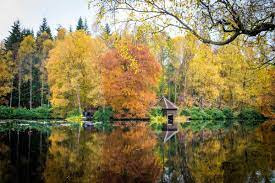Situated within the Tay Forest Park, Faskally Wood is home to a wide range of tree species, some more than 200 years old, as well as hosting the popular Enchanted Forest event which takes place here in October each year. Within the forest, explore the tranquil Loch Dunmore which features its own boat house and picturesque timber footbridge. Or head along one of the many trails and signposted paths to enjoy views over the lochside trees, marvel at the blossoming buds in spring and in autumn you can admire the stunning blends of reds and purples.
History[edit]
Pitlochry today dates largely from Victorian times, although the areas known as Moulin and Port-na-craig are much older. History records that Moulin Kirk was granted by the Earl of Atholl to Dunfermline Abbey in 1180 and Moulin became a burgh of barony in 1511. Port-na-craig was the site of the original ferry over the River Tummel which operated until the suspension footbridge was built in 1913. Building between these two separate communities followed the construction of the military road north in the 18th century which followed the line of the present main street. Moulin contained the parish school which was attended by Alexander MacKenzie (1822-1892), the second Prime Minister of Canada. This schoolhouse "Blairmount" now operates as a luxury holiday rental.
In 1842 Queen Victoria visited Perthshire on one of her grand tours and her favourable opinion of the area caused the town to be more widely noticed. After its railway station was built in 1863, Pitlochry became a favoured destination for tourists.
Robert Louis Stevenson stayed at Fishers Hotel in June 1881 with his wife Fanny and mother.[4] The party then moved to Kinnaird Cottage in nearby Moulin. Here Stevenson worked on "Thrawn Janet" (1881), "The Merry Men" (1882) and "The Body Snatcher" (1884).
In 1947 Pitlochry became a burgh. That year also saw the beginning of construction of a dam as part of the Tummel hydro-electric power scheme. The dam and its fish ladder are a popular tourist attraction today. The damming of the river created an artificial loch, Loch Faskally, but flooded a large area north of the town including the old Recreation Park, which was relocated to its current position. The new burgh council adopted the local public hall as Pitlochry Town Hall shortly after it was formed.[5]
From the 1960s, Sir Robert Watson-Watt, an inventor of radar, and his wife, Dame Katherine Jane Trefusis Forbes, Director of the Women's Auxiliary Air Force in World War II, lived at her summer house, "The Observatory", in Pitlochry. Both are buried in the churchyard of the Episcopal Church of the Holy Trinity at Pitlochry.
Pitlochry Festival Theatre[6] was founded by John Stewart in 1951, originally situated in a tent in the grounds of Knockendarroch House in Lower Oakfield. The tent became semi-permanent and remained there for 30 years until the current building at Port-na-craig opened in 1981.
The town was awarded a Gold Medal in the 2009 Britain in Bloom horticultural contest, and outright winner in the category of Small Town.[7]














No comments:
Post a Comment